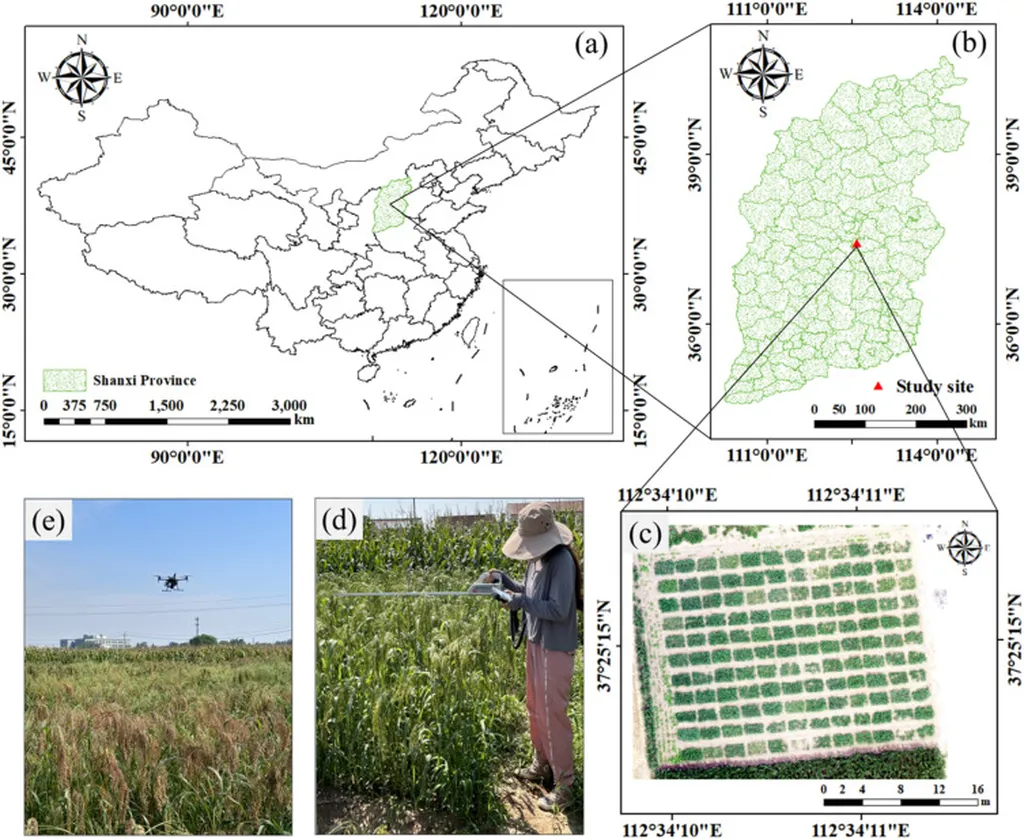In the heart of China’s arid and semi-arid regions, broomcorn millet has long been a staple crop, valued for its resilience and nutritional benefits. Now, a groundbreaking study published in *PLoS ONE* is shedding new light on how to optimize its growth, with significant implications for precision agriculture and the broader agricultural sector.
The research, led by Xiao Cui, focuses on identifying the phenotypic saturation thresholds of broomcorn millet, a critical factor in ensuring the crop’s stability and yield in challenging environments. By selecting eight representative varieties from Shanxi Province, the study employed advanced growth models to analyze the temporal dynamics of plant height, stem diameter, and chlorophyll content.
Using the Logistic model, the researchers determined that the plant height growth limit ranges from 134.86 to 171.74 cm, with a threshold achievement time of 59.60 to 73.80 days. The Richards model was applied to stem diameter growth, revealing a growth limit of 8.47 to 10.28 cm and a threshold achievement time of 70.50 to 182.20 days. Both models demonstrated a high fitting degree, with an R2 greater than 97%. A quadratic polynomial regression model was used to simulate the dynamic changes in chlorophyll content, with an R2 greater than 70%.
The findings highlight significant differences in plant height, stem diameter, and chlorophyll content thresholds among the varieties. Pinshu 4 emerged as a top performer due to its superior plant height and stem diameter, while Xiaohongruan Proso Millet 6 showcased high photosynthetic efficiency. White Proso Millet 8 exhibited a balanced performance in stem diameter and chlorophyll content, and Jinshu 7 demonstrated stable plant height and relatively high chlorophyll content.
“This study provides a scientific basis for variety selection and precision cultivation in arid regions,” said lead author Xiao Cui. “By understanding the growth dynamics and phenotypic saturation thresholds, farmers and agronomists can make more informed decisions, ultimately enhancing crop yield and stability.”
The commercial impacts of this research are substantial. Precision agriculture technologies are increasingly being adopted to optimize crop production, and this study offers valuable insights into how to tailor cultivation practices to specific broomcorn millet varieties. By identifying the optimal growth conditions and thresholds, farmers can improve water use efficiency, reduce input costs, and enhance overall productivity.
Moreover, the research underscores the importance of genetic diversity in crop resilience. As climate change continues to pose challenges to agriculture, understanding the phenotypic traits that confer stress tolerance can help in developing more robust and adaptable crop varieties.
“This study is a significant step forward in our understanding of broomcorn millet growth dynamics,” said a spokesperson for the agricultural sector. “It provides a roadmap for future research and practical applications that can benefit farmers and the broader agricultural community.”
As the world grapples with the need to feed a growing population amidst increasingly unpredictable climatic conditions, studies like this one are crucial. By leveraging advanced growth models and precision agriculture technologies, we can unlock the full potential of crops like broomcorn millet, ensuring food security and sustainability for future generations.
The research, published in *PLoS ONE* and led by Xiao Cui, represents a pivotal advancement in the field of agricultural science, with far-reaching implications for the global agriculture sector.

